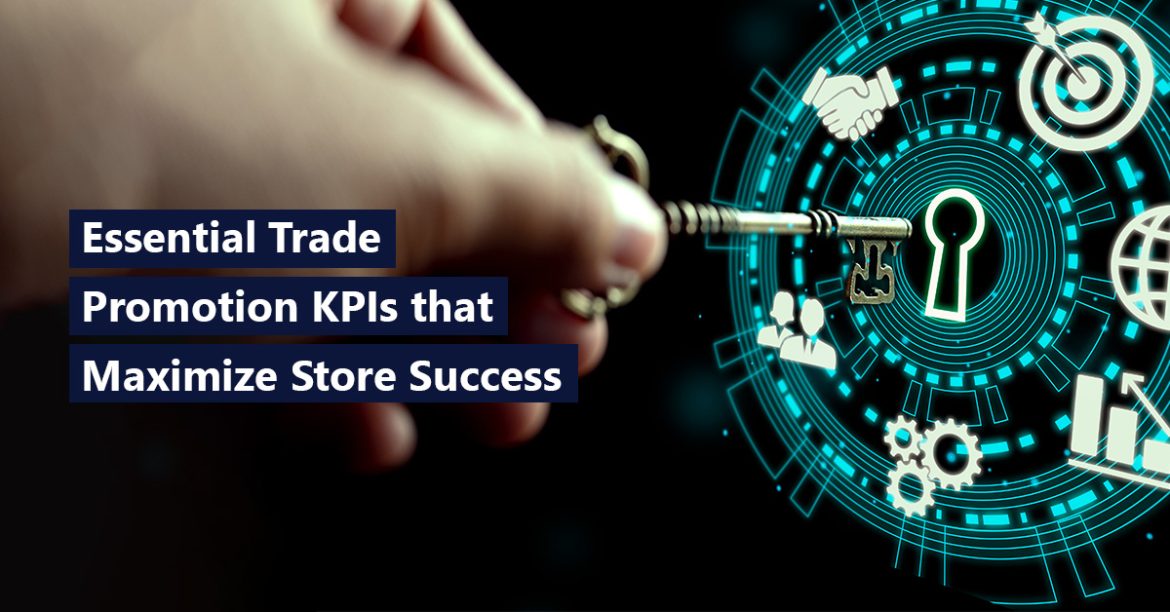Table of Contents
Introduction
When considering how successful a business is, what factors do we explore? How & why are these imperatives for trade promotion effectiveness? These are a few questions that make the difference between a regular performing business and a stellar one. Therefore, let us outline such KPIs (Key Performance Indicators) related to trade promotion effectiveness analysis and the impact they have on store performance.
What does it take to be successful?
From a store perspective, innovation, agility, accountability, accessibility, and value for money are the main factors when determining brand performance & success. However, do not forget that even efficiency is part of the main factors involved, without which performance will merely shrivel & diminish. The key to thriving also lies in the concept of continuous improvement and consistency. Hence, gaining a comprehensive insight into performance trends is imperative to gauge promotion effectiveness analysis.
Trade promotion effectiveness analysis
Sales Generated
Fairly simply, calculating the sales generated over a promotional period provides a reliable insight into whether a promotion is successful or not. Be mindful, however, that a mere sales boost does not necessitate the promotion being overall positive for your brand. Monitoring general sales during promotions is best as a baseline when compared with other KPIs. Retail is a form of promotion effectiveness analytics.
Incremental Sales Lift
This metric gauges any change in revenue linked to promotions. Although the sales achieved during the campaign may be positive, did you level off or exceed your non-promotional projected return? This can be calculated by finding the difference between your baseline sales (as per area historical sales data) from your overall earned revenue during a campaign.
Trade Spend
To make sense of your sales lift, it is crucial to monitor trade spending. These factors all the funds spent to drive the promotion primarily. Ideally, your incremental sales lift during promotional events should exceed the amount spent on advertising and (dismal) baseline sales you anticipated (discouraging you from proceeding). This is your trade promotion effectiveness.
Hours Worked
Teams commonly overlook the significance of non-financial KPIs during promotions. This is incorrect, especially when considering optimization. The volume of work you invest in executing an advertisement is instrumental. Despite good sales figures and successful promotion, reviewing your expenses holistically can reveal overworking your reps and excessive spending on hourly workers who exceed the necessary threshold. Effective time management is vital as it. Optimizing processes to maximize not only efficiency but also time & resources invented (during a promotion).
Orders Placed
Another rarely used trade promotion KPI (key performance indicators) is monitoring orders placed. It is significant as it informs you about the value of your promotional planning. Promotional order volume sales targets should be based on historical sales trends and trade promotion analysis data for an accurate estimate of the order volumes required. As the promotion ends, comparing your expected order volume with your actual number provides insights into how well prepared your team was for sales increases, how well you projected stock diminishment and whether you sold as much product as you initially anticipated.
Cannibalization
Tracking cannibalization during a promotion is another vital part of understanding your overall promotional success. A boost in product sales is worthwhile yet needs perspective per your overall brands category. Ensure to track sales of exclusive products closely during promotions. If you notice cannibalization, you need to review which product features are most advantageous to consumers and which can be compromised to harness the full potential of promotional pricing instead. This is a form of promotion effectiveness analytics.
All these metrics culminate in promotion effectiveness analysis by encompassing meaningful & gaugable data for comparative purposes.
The marvels of Edge Verve’s Trade Edge promotional effectiveness platform
TradeEdge leverages ML (Machine Learning)-based modeling in the form of promotion effectiveness. This enables enterprises to gauge and thoroughly interpret the effectiveness of trade promotions. It analyzes the complex and disparate point-of-sale data, delivering better accurate analysis over multiple metrics, including spend ratio & volume uplift. Founded on a lightweight architecture, this drives computations cum analysis for operating continuously over large data sets.
This application opts for a three-stage maturity model, focusing on how previous promotions were run to leverage AI Artificial Intelligence modeling techniques for powerful predictive analytical capabilities. Now statistical-based extrapolation for plotting future trends is here to empower your judgment.
Key features
Promotion Effectiveness is built to leverage advanced ML-based modeling criteria to analyze and enrich promotion effectiveness.
Enhanced Data Management
Proven data platform for data acquisition, cleansing, enhancing, and harmonizing data throughout the supply chain network.
Causal Modeling
ML-based modeling to comprehend promotion performance and identify factors influencing [promotion effectiveness.
Simulation & Prediction Modeling
What-if scenario modeling automatically advises the best optimal promotions for running under user-defined constraints.
Key benefits
Promotion Effectiveness visibility for factors influencing promotion effectiveness and advising optimized promotion parameters.
- Promotional performance driver insights
- ROI promotion understanding
- Optimized promotion campaigns
This drives costs down via an iterative & interactive process, considering all factors.
Multi-causal modeling monitors the effect factors have on the business, while ‘Cannibalization & Halo’ gauges the overall effectiveness of trade promotions on a product’s sales output. Finally, prediction & simulation harness data insights to formulate predictive statistical analysis (extrapolation) to perceive expected trends, preparing with many respective and aversive actions accordingly.
Conclusion
Despite the hype about many specific factors, one thing will always remain. That is the ability to monitor and make objective observations based on performance. Maximizing store capacity also depends on one’s ability to analyze and then adapt when required with agility. Lastly, success relies on the unification of teamwork and data intelligence.
Also Read: Running a Call Center: How Software Can Improve Efficiency


